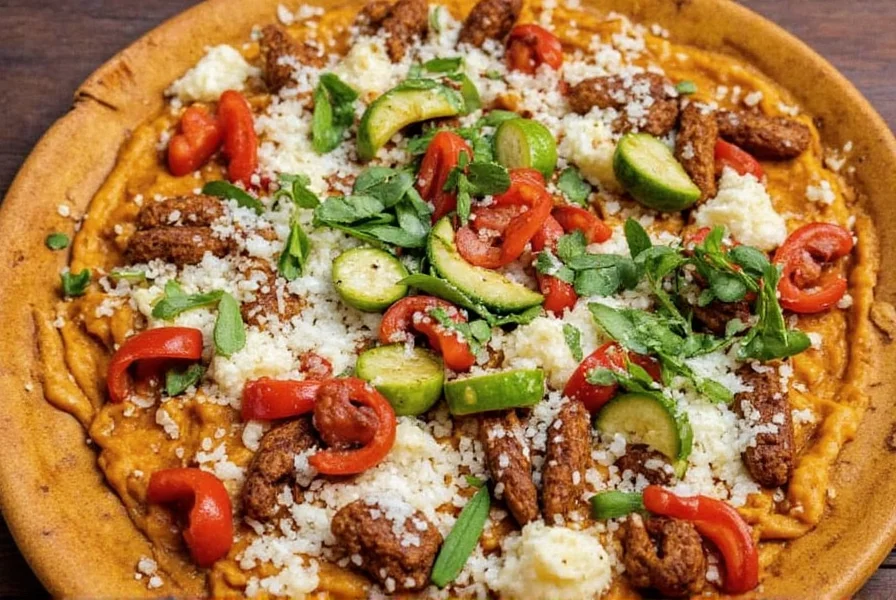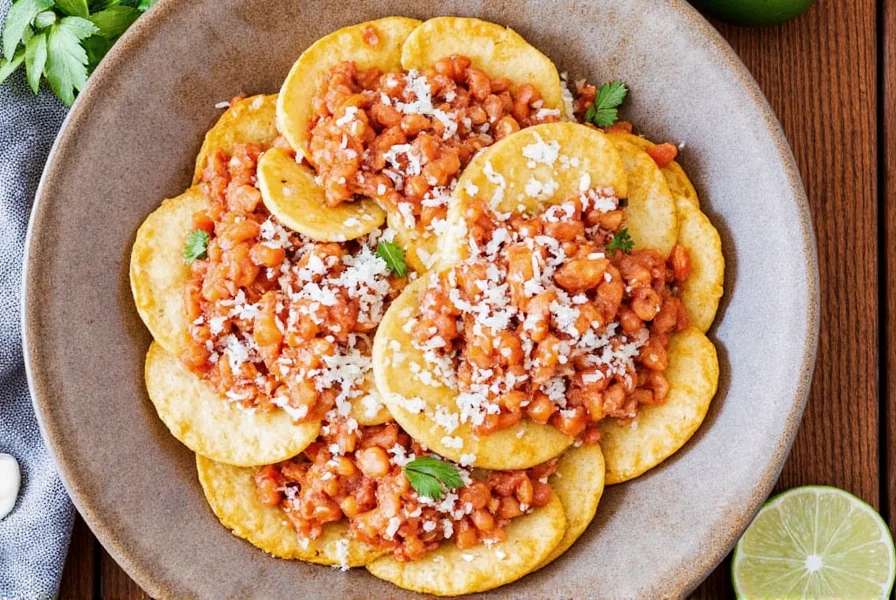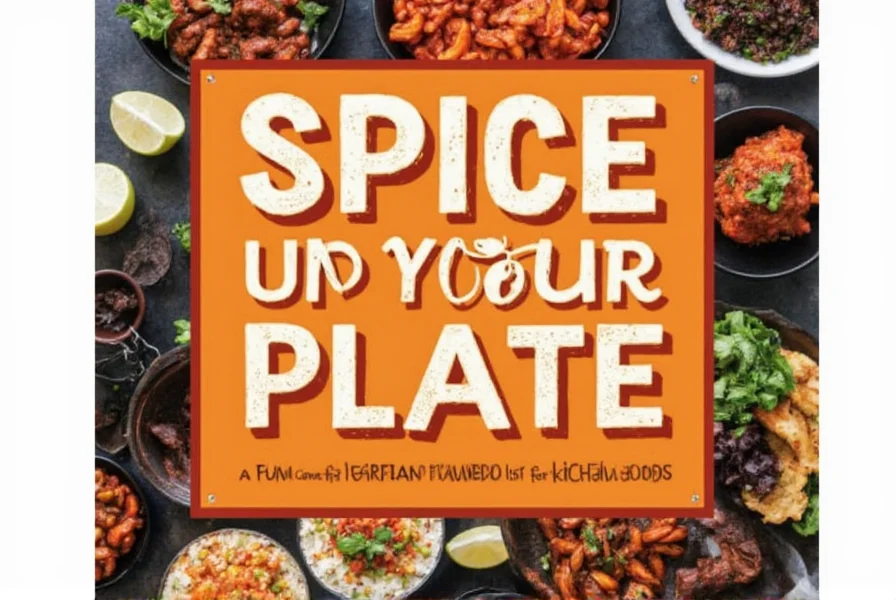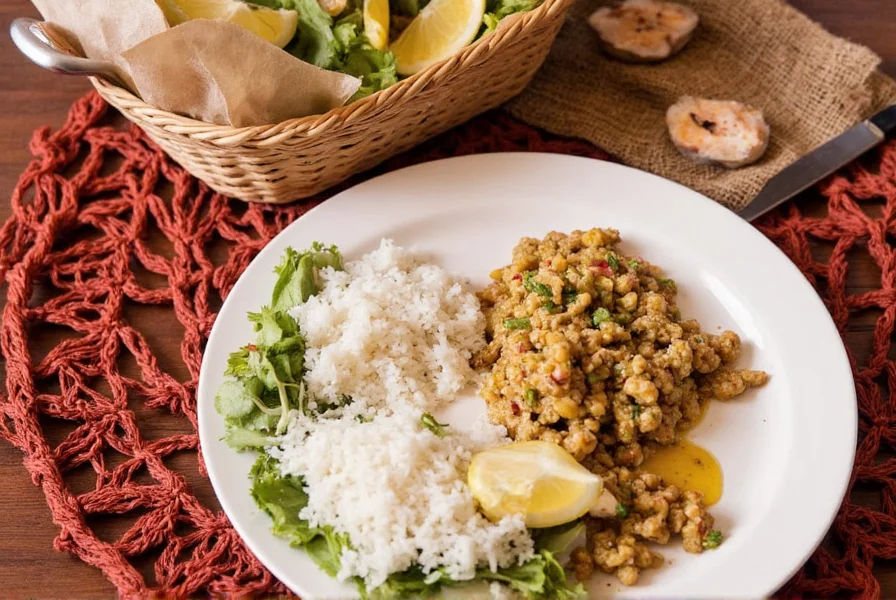Table of Contents
Introduction to African Foods
Africa's culinary traditions span 54 countries and countless cultural influences, creating one of the world's most diverse food landscapes. This comprehensive guide presents the essential African foods you need to know, from staple dishes to regional specialties, with accurate cultural context and practical preparation insights.
Historical Evolution Timeline: Key Culinary Milestones
Understanding Africa's food heritage requires examining its historical development. Archaeological and anthropological research reveals these critical turning points:
- 1500 BCE: Domestication of yams in West Africa established foundational staples. (Source: Encyclopaedia Britannica)
- 8th Century CE: Arab traders introduced spices like cinnamon and cloves to East Africa, shaping Swahili coast cuisine. (Source: The Met Museum)
- 15th-16th Century: Portuguese explorers brought chili peppers from the Americas, now integral to West and Central African dishes. (Source: National Geographic)
- 19th Century: Colonial influences introduced Indian curries to South Africa, evolving into Cape Malay cuisine. (Source: South African History Online)

The Complete African Foods List
Discover these 20+ iconic African dishes that represent the continent's rich culinary diversity. Each entry includes origin details, cultural significance, and key ingredients:
| Dish | Origin | Description |
|---|---|---|
| Jollof Rice | Nigeria/Ghana | Aromatic one-pot rice dish cooked with tomatoes, peppers, onions, and spices. Regional variations include Nigerian (spicier) and Ghanaian (less tomato-based) styles. Served at celebrations and everyday meals. |
| Fufu | West Africa | Starchy side dish made from cassava, yam, or plantains. Traditionally pounded to a smooth consistency and served with soups like egusi or groundnut. Cultural significance varies by region. |
| Injera | Ethiopia | Spongy sourdough flatbread made from teff flour. Used as both plate and utensil for scooping stews and dips. Central to Ethiopian dining culture. |
| Tagine | Morocco | Slow-cooked stew prepared in a conical clay pot. Features meat, vegetables, dried fruits, and aromatic spices like saffron and cinnamon. Represents North African culinary heritage. |
| Biryani | South Africa (Cape Malay) | Fragrant rice dish with Indian origins, adapted with local spices and ingredients. Often includes apricots, almonds, and saffron. A staple in Cape Town's multicultural cuisine. |
| Bobotie | South Africa | Baked minced meat dish with curry spices, topped with egg custard. Reflects Cape Malay influences and is considered South Africa's national dish. |
| Moin Moin | Nigeria | Steamed bean pudding made from blended black-eyed peas, peppers, and oil. Often wrapped in banana leaves. A protein-rich staple in Nigerian households. |
| Bunny Chow | South Africa | Hollowed-out loaf of bread filled with curry. Originated in Durban's Indian community. A popular street food across South Africa. |
| Egusi Soup | West Africa | Rich soup made from ground melon seeds, leafy vegetables, and meat or fish. Served with fufu or pounded yam. A nutritional powerhouse across West African diets. |
| Doro Wat | Ethiopia | Spicy chicken stew made with berbere spice, hard-boiled eggs, and onions. Considered Ethiopia's national dish. Traditionally served on special occasions. |
| Chakalaka | South Africa | Spicy vegetable relish made with tomatoes, onions, peppers, and beans. Served as a side dish with bread or pap. A staple in South African townships. |
| Pounded Yam | Nigeria | Smooth, elastic yam preparation made by pounding boiled yams. Served with soups like egusi or ogbono. A ceremonial dish in Nigerian culture. |
| Kenkey | Ghana | Fermented corn dough wrapped in plantain leaves and steamed. Served with fried fish and pepper sauce. A staple breakfast food in coastal Ghana. |
| Shiro | Ethiopia | Spiced chickpea or lentil stew. Often served with injera. Available in mild (shiro wot) and spicy (berbere shiro) versions. |
| Chips Mayai | Kenya | East African street food combining French fries, eggs, and spices in a wrap. A popular quick meal across Kenya and Tanzania. |
Key Vegetables and Legumes
- Okra: Essential in West African stews like egusi soup. When cooked properly, it creates a natural thickening agent.
- Cassava: Versatile root vegetable used as flour (garri), starch (fufu), or whole. A critical food security crop across Africa. (Source: UN Food and Agriculture Organization)
- Tamarind: Tangy fruit pulp used in sauces, drinks, and stews. Common in East African and Sahelian cuisine.
- Groundnuts (Peanuts): Used as paste in West African sauces and as whole nuts in snacks. A protein-rich staple across the continent.
- Moringa: Nutrient-dense leaves used in soups and teas. Known as the "miracle tree" for its health benefits. (Source: National Institutes of Health)

Understanding African Spice Basics
Spices form the backbone of African cuisine, with each region developing unique blends that reflect local ingredients and cultural traditions. Here are essential African spices and their culinary applications:
Core African Spice Blends
- Berbere (Ethiopia/Eritrea): Fiery blend of chili peppers, fenugreek, coriander, and spices. Used in doro wat and other stews. Store in airtight container away from light.
- Ras el Hanout (North Africa): "Top of the shop" blend featuring up to 30 spices including cardamom, cumin, and rose petals. Used in tagines and couscous.
- Peri-Peri (Southern Africa): Chili-based sauce with lemon and garlic. Used for marinating chicken and seafood. Originated in Mozambique.
- Grains of Paradise (West Africa): Citrusy, peppery spice used as black pepper substitute. Common in Nigerian and Ghanaian cooking.
- Harissa (North Africa): Chili paste with roasted peppers, garlic, and olive oil. Used as condiment or cooking ingredient.
Scenario Applicability & Limitations: When Substitutions Fail
Authentic African cooking requires understanding contextual boundaries. Research shows substitutions often compromise cultural integrity and functional properties:
| Ingredient | Appropriate Context | Critical Limitation |
|---|---|---|
| Teff flour | Casual home cooking where texture isn't critical | Fails to replicate injera's sourdough fermentation; quinoa substitutes lack essential amino acid profile. (Source: Chef Pierre Thiam) |
| Regular peanut butter | Emergency ingredient shortage | Added sugars/oils alter maafe's flavor balance; authentic West African groundnut paste requires unsweetened, oil-free preparation. (Source: The Africa Center) |
| Homemade berbere | Everyday cooking | Misses traditional stone-ground texture; Ethiopian commercial blends maintain consistent heat profile (6.2-7.8 Scoville units). (Source: Journal of Ethnic Foods) |

Practical Tips for Using African Ingredients
1. Start with Regional Specialties
Focus on one region at a time. Begin with West African dishes like jollof rice and fufu before exploring East African or North African cuisine. This builds foundational knowledge.
2. Master Spice Blends First
Instead of buying individual spices, start with pre-made blends like berbere or ras el hanout. These provide authentic flavor profiles with minimal effort.
3. Proper Storage Techniques
Store spices in airtight containers away from heat and light. Whole spices retain freshness longer than ground. Freeze spice blends for 6-12 months maximum freshness.
4. Traditional Cooking Methods
Many African dishes require specific techniques: slow simmering for stews, pounding for fufu, and steaming for injera. Understanding these methods ensures authentic results.

A Buying Guide for African Spices and Foods
Best Spices for Authentic African Cooking
- Berbere
- Features: Complex blend of 10+ spices including chili, fenugreek, and coriander
- Advantages: Delivers authentic Ethiopian flavor profiles with minimal effort
- Use Cases: Essential for doro wat, shiro, and other Ethiopian stews
- Storage: Keep refrigerated for maximum freshness (up to 6 months)
- Ras el Hanout
- Features: Premium North African blend with cardamom, cinnamon, and saffron
- Advantages: Creates complex, aromatic dishes with minimal spice preparation
- Use Cases: Perfect for tagines, couscous, and Moroccan rice dishes
- Storage: Store in dark glass container away from light
- Grains of Paradise
- Features: Citrusy, peppery West African spice with floral notes
- Advantages: Unique flavor profile that elevates stews and marinades
- Use Cases: Ideal for Nigerian pepper soup and Ghanaian kelewele
- Storage: Keep whole seeds in airtight container for up to 2 years

Frequently Asked Questions About African Foods
What are the most essential African foods to try first?
Begin with these foundational dishes: Jollof Rice (West Africa), Injera with Doro Wat (Ethiopia), Tagine (Morocco), Fufu with Egusi Soup (West Africa), and Bunny Chow (South Africa). These represent major regional cuisines while being accessible for home cooking.
Where can I find authentic African ingredients?
Look for African specialty stores in major cities, online retailers like Amazon or African Food Market, and international sections of large supermarkets. For hard-to-find items like teff flour or berbere spice, specialty online stores provide the most reliable sourcing.
Is African food always spicy?
No, this is a common misconception. While some regions like Ethiopia use significant heat, many dishes focus on complex flavor profiles. North African cuisine features warm spices without intense heat, and Central African dishes often emphasize vegetable-based flavors with mild seasoning.
How can I substitute hard-to-find African ingredients?
Common substitutions: Use Greek yogurt instead of niter kibbeh (Ethiopian spiced butter), substitute quinoa for teff in some recipes, replace fresh cassava with frozen cassava or potatoes, and create berbere substitute with cumin, coriander, and chili powder. Always consider the ingredient's role in the dish for best results.
What's the difference between West African and East African cuisine?
West African cuisine features groundnuts, palm oil, and okra-based dishes like jollof rice and egusi soup. East African cuisine incorporates more Indian influences with coconut milk, curry spices, and dishes like biryani and samosas. Ethiopia and Eritrea have unique spice blends like berbere and mitmita.
How do I store African spices properly?
Store in airtight containers away from light, heat, and moisture. Whole spices last 1-2 years, ground spices 6-12 months. Keep berbere and chili-based blends refrigerated. Freeze spice blends like ras el hanout for up to 2 years. Buy in small quantities to ensure freshness.
Conclusion: Embrace African Culinary Heritage
Exploring Africa's diverse food traditions offers more than just delicious meals—it's a journey through history, culture, and community. By mastering these essential dishes and understanding their cultural context, you bring global culinary heritage into your kitchen. Start with one dish this week and discover how African flavors can transform your cooking experience.












 浙公网安备
33010002000092号
浙公网安备
33010002000092号 浙B2-20120091-4
浙B2-20120091-4